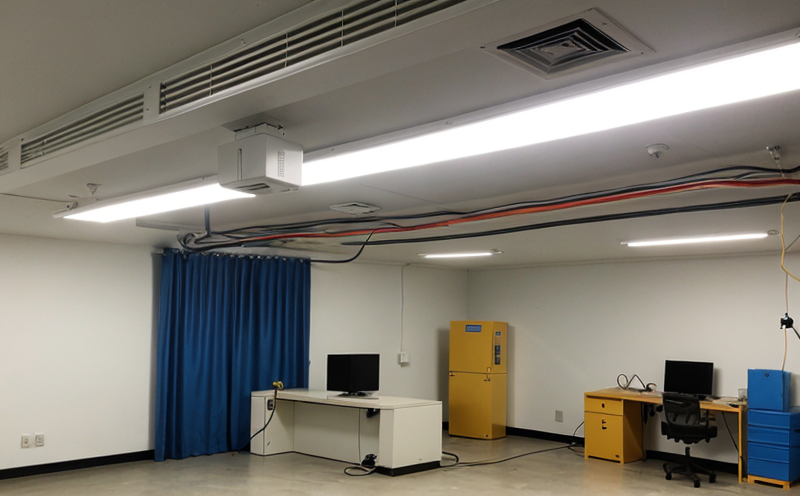IEC 61000-3-2 Harmonic Emission Limits
The IEC 61000-3-2 standard is a crucial document within the broader framework of electromagnetic compatibility (EMC) for electrical and electronic equipment. It specifically addresses harmonic emissions, which are defined as unwanted alternating currents or voltages at frequencies other than those specified in the fundamental frequency of the supply system.
Harmonic distortion can arise from various sources such as non-linear loads like variable speed drives (VSDs), soft starters, and electronic ballasts. These distortions can lead to increased heating in transformers and motors, reduced efficiency, and potential damage to electrical equipment if not properly managed.
The standard provides guidelines for the limits of harmonic emissions from equipment connected to power distribution systems. Compliance with these limits ensures that the equipment does not introduce unacceptable levels of harmonics into the supply system, thereby maintaining a clean and stable power quality environment.
Testing according to IEC 61000-3-2 is particularly important for industries such as manufacturing, where continuous operation of machinery and lighting systems can significantly impact the electrical network. Quality managers and compliance officers play a vital role in ensuring that equipment meets these standards to avoid potential disruptions and costly repairs.
The testing process involves measuring harmonic currents at specified points on the power distribution system. This includes identifying and quantifying the harmonic content of the supply voltage, which is then compared against the limits specified in the standard. The apparatus used for this purpose typically consists of a spectrum analyzer capable of capturing the frequency components of the signal.
Acceptance criteria for compliance with IEC 61000-3-2 are stringent and involve ensuring that no harmonic component exceeds predefined thresholds. This is crucial to maintain the integrity of the power supply network and prevent interference in other equipment connected to the same system.
| Harmonic Order | Limit (%) |
|---|---|
| 3rd | 4.0 |
| 5th | 2.8 |
| 7th | 1.6 |
Applied Standards
The application of IEC 61000-3-2 is not limited to a single sector but applies across various industries where electrical and electronic equipment are used. Some key sectors include:
- Manufacturing
- Construction
- Tech & IT
- Utilities
The standard is widely recognized for its comprehensive approach to managing harmonic emissions, making it a cornerstone in the design and testing of equipment used in these sectors.
Industry Applications
| Application | Description |
|---|---|
| Data Centers | Evaluating the impact of IT equipment on power quality. |
| Factories | Testing machinery and lighting systems for compliance. |
| Offices | Ensuring that office equipment does not degrade power quality. |
Why Choose This Test
- Guarantees compliance with international standards, ensuring safety and reliability.
- Avoids potential disruptions to operations due to power quality issues.
- Promotes efficient use of electrical resources by reducing waste from harmonic emissions.
- Protects sensitive electronic devices from damage caused by distorted power supply.





